University of Bolton, Deane Road, Bolton. BL3 5AB
Tel:
Email:


“At the University of Bolton, we take great pride in providing a quality, supportive learning environment for our students.”
Professor George E Holmes DL | President & Vice Chancellor
“...tutors are very supportive and you’re not just a student ID number, at this university you are an individual with a name.”
Ellisse Vernon | BSc (Hons) Adult Nursing
Back to menu
Back to menu
Study with an Off-Campus Partner
Back to menu
Back to menu
University of Bolton, why we are the right choice
Location - Bolton, Greater Manchester

07/05/2024
In recent years, landmark legal cases such as the UK Employment Tribunal's ruling on Uber drivers and concerns over job displacement due to Amazon's Humanoid factory robots have thrust the complexities of AI and the future of work in organisations into the spotlight. As we witness the emergence of new organisational forms under the wave of AI, it becomes increasingly evident that these developments will have profound ramifications, particularly concerning how organisations are led.

Hakeem Owolabi Professor in Business and Innovation discusses AI in business
This piece explores the ways in which Artificial Intelligence (AI) is ‘replacing’ human interface in strategic leadership roles and decisions within modern organisations. Unlike traditional leadership, “Automated leadership” espouses the notion of “a computer agent exerting purposeful influence over human agents to guide, structure, and facilitate activities and relationships in a group or organisation”. This nascent area has been attracting growing interest from many corners including academics, regulators and corporate executives, especially with the rapid rise of AI-driven start-ups. Previous researchers have found that most concepts of leadership have been conceived from a human-to-human context, that is, humans making decisions for other humans. However, with the rapid advancement in artificial intelligence (AI) and autonomous systems, more organisations are increasingly automating many earlier traditional leadership functions, thus relying on artificially intelligent agents for key decision-making.
For instance, with powerful algorithms, computers can now decide who to hire, distribute tasks to employees, evaluate performance of tasks, and even determine payments, remuneration or promotion. Not too long ago, a Hong Kong Venture Capital firm (Deep Knowledge Ventures) appointed a decision-making algorithm to its board of directors, to learn and make intelligent board room decisions. Nevertheless, despite the huge potential, the social significance of the so-called automated leadership agents for employees in organisations has not been fully considered, thus provoking careful enquiry. One of the key concerns for scholars regarding automated leadership is that we do not comprehensively know how it impacts employee job performance (JP) and organisational citizenship behaviour. Employee performance – which refers to the level of effectiveness and efficiency with which an employee performs their job - is significantly influenced by the leadership function. Beyond setting goals and expectations, providing guidance and motivating employees; leaders play crucial roles in influencing employee productivity and creating positive workplace environment. Effective leaders create a positive work environment that is conducive to high performance and engender organisational citizenship (pro-social) behaviours from employees. As a result, most organisations desiring sustained competitive advantage often harness their employees’ skills and abilities by creating a positive working environment which motivates employees’ self-driven initiatives, positive working attitudes, and job performance.
Nevertheless, while existing body of works have examined leadership forms and impacts on employee performance [i.e., transactional, charismatic, and transformational leadership], in this piece, we narrow in on the real-life implications of artificially intelligent leadership-agent/s (an automated leader) on employee performance and working behaviours in typical organisational setting. Notably, the current performance management model has distinguished between task and contextual performance. Task performance is described as the proficiency with which an employee performs or delivers on the tasks officially and technically recognised as part of his or her primary duties. It directly focuses on the application of employees’ technical skills and involves the implementation of an organisation’s technical or maintenance processes whilst assisting its technical needs. Examples of task performance will include designing a website, assembling parts, writing company reports, planning a production process etc.
Conversely, contextual performance entails activities that do not contribute to the firm’s technical core but include extra roles that are based on the employee’s spontaneity and help promote the organisational, psychological, and social environment of the workplace. Examples of contextual performance include behaviours like helping and cooperating with colleagues, offering useful suggestions, volunteering for special assignments, taking on extra tasks, taking charge, supporting, and defending organisational rules, values, and goals etc. Employees exhibiting contextual performance will offer to take-on extra tasks which are formally outside of their job scope and persist with enthusiasm, to successfully complete such tasks. Scholars believe these discretionary organisational citizenship behaviours enhance job satisfaction as employees feel they are making a difference.
While leadership is noted to significantly influence how employees demonstrate contextual vis-à-vis task performance on their jobs; employee behaviour in the context of an automated leadership is unpredictable and complex. For instance, several scholars have suggested that continuous automation of simple organisational tasks and functions often increases job complexity and complicates how employees react to their roles. Other bodies of work have also criticised relying solely on data and algorithms to evaluate employee performance, which according to the scholars can create a lack of human perspective, thereby resulting in negative impact on employee working behaviour. For example, an autonomous tracking of employee performance would ensure employees focus more on completing their own tasks, than helping or collaborating with colleagues in need of help or new on the job. This could give rise to pro-social behaviours like team spirit and support giving way to individualism and concern for quality delivery giving way to concern for outputs achieved. Interestingly, conflicting standpoints challenging the negative impact of Automated leadership on employees are also on the rise. While some researchers have suggested employees usually respond positively to new technological innovation in the workplace, some have found positive organisational outcomes for automated leadership i.e., productivity and performance, team dynamics, etc. But given the pervading ambiguity, scholars believe the impact of AI leadership-agents on employee performance outcomes is debatable, thus giving business leaders food for thought on adoption.
Conclusively, as organisations navigate the evolving landscape of AI in organisational leadership, understanding its impact on employee outcomes will no doubt help better shape the future of work, and determine how businesses, employees and regulators respond.
Hakeem Owolabi
Professor in Business and Innovation